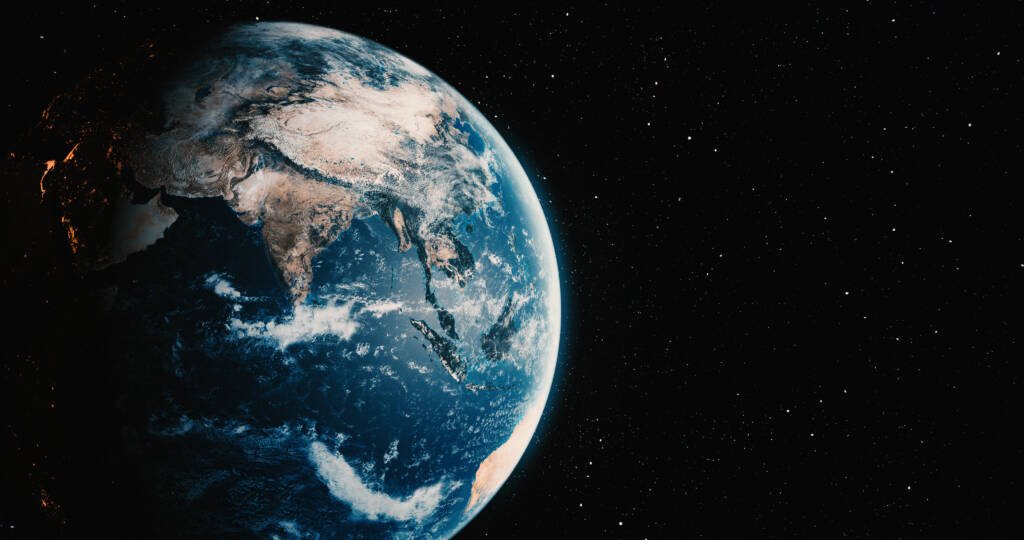
Adult Education Earth Space Science (lab)

Be captivated by the wonders and beauty of the third planet from our Sun, Earth. Be amazed by what awaits your discovery within our solar system and beyond. It is your turn to explore the universe.
Earth/Space Science is a laboratory course focusing on the study of space, geologic structures and forces, the waters on our planet, and the atmospheric forces that shape our world. Through experimentation and investigation, students will explore the earth cycles including the geosphere, hydrosphere, crysosphere, atmosphere, and the carbon cycle. Students will learn about scientific inquiry, geologic time, space exploration, the solar system, and the universe. Students will use web 2.0 tools, interactive experiences, higher-order thinking, collaborative projects, and real-world application through labs and a variety of assessments. Upon completion of the course, students will have a clear understanding of the dynamic forces at work in the world around them, becoming better caretakers of our planet, Earth.
Note: content varies depending on course version. For currently enrolled students, please refer to the syllabus located in the course information area for curriculum specifics.
Cost: Students purchase 28 days of access for $105. Students may work as quickly through the content as they wish. Every 28 days, students may purchase an additional 28 days of access for an additional $105.
Major Topics and Concepts
Beginning with Science
- Science processes
- Observations and inferences
- Historical frame of reference- scientists and explorers
- Theory vs. law, science vs. pseudoscience
- Cryosphere, Hydrosphere, Biosphere, Atmosphere, Geosphere
Segment 1
- Climate and Meteorology
- Structure of the atmosphere
- Trends in temperature and atmospheric pressure
- Factors influencing weather and climate
- Humidity, air pressure, air masses, temperature, long term conditions
- Global air circulation and winds, coriolis effect
- Severe weather formation, influence on human behavior
- Severe Storms; Lightning (Honors)
- Freshwater
- Water cycle
- Conservation (Honors)
- Water Quality
- Groundwater
- Surface water
- Rocks and Minerals
- Properties of minerals
- Rock cycle
- Soil and soil formation
- Rocks and minerals as resources
- The Universe
- Light waves
- Space exploration
- Gravitational forces
- Stars and Constellations (Honors)
Segment 2
- Geologic Time
- Gregorian calendar
- Relative and absolute time (Honors)
- Origin and evolution of life
- Geologic time scale, geologic periods and history
- Fossils, fossil formation
- Reading series of events in sedimentary rocks based on principles of geology
- Oceans
- Composition of ocean water
- Ocean currents
- Sea floor features
- Using latitude and longitude to navigate and locate points on the globe/map reading
- Climate and current connection
- Our Solar System
- Organization of the Milky Way and types of galaxies in general
- Characteristics of stars – focus on ours – the sun
- The planets in our solar system
- Moon/Earth Relationships
- Moon phases
- Effects of moon on tides
- Kepler’s Law, Newton’s Law
- Sun/Earth Relationships
- Rotation and revolution characteristics
- Causes of seasons
- The Geosphere
- Layers of the Earth
- Carbon cycle
- Plate techtonics
- Continental drift
- Surface features
- Geologic events (Honors)
Competencies
Climate and Weather
Students will demonstrate an understanding of climate and weather by explaining the water cycle, describing Earth’s atmosphere, and comparing weather and climate.
Fresh Water
Students will demonstrate an understanding of fresh water by describing freshwater systems, explaining water quality, and describing water conservation.
Matter and Energy
Students will demonstrate an understanding of matter and energy by describing the atomic structure and forces, explaining the phases and transformations of matter, and relating the processes of energy transference to the phases of matter.
Our Universe
Students will demonstrate an understanding of our universe by describing features of the universe, summarizing the exploration and origins of our universe, and explaining stars and elements.
Rocks and Minerals
Students will demonstrate an understanding of rocks and minerals by explaining mineral identification, describing the rock formation and the implications of mining, and evaluating soil characteristics and classification.
Geologic Time
Students will demonstrate an understanding of geologic time by explaining the geologic time scale, differentiating theories on the origin and evolution of life, and describing the coevolution of Earth’s systems.
Our Solar System
Students will demonstrate an understanding of our solar system by describing solar system formation, explaining the forces in our solar system, describing celestial objects, and explaining the Earth-sun-moon system.
The Geosphere
Students will demonstrate an understanding of the geosphere by describing the composition and structure of the geosphere, explaining the carbon cycle, and differentiating plate movement and boundaries.
The Oceans
Students will demonstrate an understanding of the oceans by describing the characteristics of the oceans, comparing ocean movements, and explaining ocean interactions.
